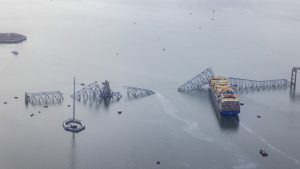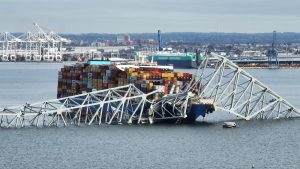
Talks are likely to resume in Egypt
Rachel Corrie: Gaza, Palestine, Aided Israel hamas-war Twenty-one Years After Rachel’s Death, Palestinians Remember Israel
AMMAN, Jordan — Twenty-one years ago this month, Rachel Corrie, a young American activist, was protesting the Israeli demolition of homes in the Gaza Strip. Bulldozers had already destroyed the surrounding houses in the neighborhood of Rafah where she was based; on March 16, 2003, they came for the Nasrallah family home where the college student was staying.
Under the Israeli law to which she referred, which has been upheld by the country’s Supreme Court, Israel cannot be held liable for its actions in war – and Israel says its own law overrides international law in such cases.
Cindy says that at least one person knew that Rachel was in front of the bulldozer. “I mean, the most obvious thing to do is say, ‘Oh my God, we didn’t see her and we’re so sorry.’ They did not say that.
They launched a civil suit in 2010, seeking a symbolic $1 compensation, after an internal military investigation cleared the bulldozer’s driver and spotter of any blame. The case came to an Israeli court two years later, but the Corries said they were not allowed to hear the testimony of the soldiers involved or have surveillance video they say proved contradictions in the military account admitted as evidence.
Since their daughter was killed, Cindy and Craig Corrie have traveled to Gaza, the West Bank and Israel several times. On their first visit to Rafah, in the fall of 2003, they peered through the same crack in the garden wall where the Nasrallah children had watched Rachel being crushed to death. When they sat down to lunch with the family, armored Israeli vehicles surrounded the house to intimidate them, Craig Corrie recalls.
An Israeli army investigation found that soldiers in the armored cab didn’t hear her or see her, and she was responsible for her own death by not moving out of its path.
Source: 21 years after her death in Gaza, Palestinians remember U.S. activist Rachel Corrie
“When I Met Rachel,” she confided: ‘I don’t know what happened to them, but we can do what they do’
She said her daughter’s legacy is creating a community of people working toward peace and justice. “I think Rachel … knowing what a really critical observer she was, just transformed our understanding of what was happening 21 years ago in Gaza and throughout that region,” she says. “So I think that legacy is about more people engaging with this, learning, understanding and knowing what a huge, enormous responsibility we have to try to impact it.”
Cindy says that it’s every parent’s worst nightmare. I would have told them I didn’t think it would happen and that we would find a way to carry on after Rachel’s death. I won’t draw another breath.'”
“After a little while,” he says, “we realized we’ve met many Palestinians and Israelis who have suffered the same sort of loss and want nothing to happen to them.”
Nasrallah said Corrie used to join maintenance teams from the Rafah municipality to try to deter the Israeli army from attacking them when they were fixing broken water lines or repairing the electricity grid after Israeli attacks.
He wrote that she was a leader when she used her pen and words to educate the world about the need for peace and justice in this area.
He wrote from Gaza that the child who slept peacefully at the end of the day had told sweet stories to help the children sleep without fear.
When living with the Nasrallah family in Rafah, they would have a tradition of telling stories to the young kids to distract them from the explosions.
“No child should have to live in that situation, it’s hard to hold in your mind,” she wrote. She wrote of bullet holes in the walls, of the children sleeping in their parents’ room in the back because there was less risk of being shot there.
After being in Gaza as a college student working with the activist group the International Solidarity movement, Corrie told her parents she had encountered a reality she couldn’t have imagined.
People in third-world countries are the same as us, and we need to know that. We have got to understand that they dream our dreams and we dream theirs. We have to be aware that they are us. We are them.”
The young girl with the pony tails read from a book and said, “We have got to understand that the poor are all around us and we’re ignoring them.”
At age 10, she wrote a statement and gave it to the Washington state capitol, where she said that she wanted to stop children from dying of hunger.
Corrie wrote stories almost as soon as she learned how to write, her mother tells NPR. Her creativity and a passion for social justice were nurtured by an alternative public school, founded by parents including hers, that she attended in Olympia.
But Corrie’s own words have perhaps had the widest reach. Her journals and emails were turned into books, along with a play about her.
Source: 21 years after her death in Gaza, Palestinians remember U.S. activist Rachel Corrie
A Palestinian Prisoner’s Dream: Raising a family to safety in the presence of an Israeli army and removing her daughter from the Gaza Strip
“I think about the others constantly, talking about them,” he says. They’re us. We are the ones that are there. They dream of us. We dream theirs.’ That, to me, is totally true, and it needs to be repeated.”
The children have been shot and dead in the time she has been here. “I feel like what I’m witnessing here is a very systematic destruction of people’s ability to survive. And that is incredibly horrifying.”
Nour says the family is worried about the lack of medication for her dad, who has a number of chronic diseases, and her cousin, who is eight months pregnant.
In her final interview, in March of 2003 she talked to the Middle East Broadcasting network surrounded by the ruins of demolished houses in Egypt. The Israeli military knocked out half of the water supply in the city before she arrived.
Khaled Nasrallah is one of the sons and fathers of Nour, and he works for the U.N. in Gaza, where most of the population relies on aid. Like other families, they now spend almost all their time trying to procure food, water and medication.
Source: 21 years after her death in Gaza, Palestinians remember U.S. activist Rachel Corrie
The Hamas Attack on Israel and the Gaza Refugees: Rachel Corrie and Nour Nasrallah, the First of Their Families
Corrie, wearing an orange fluorescent vest and speaking through a bullhorn, was determined to stop them. Standing alone on a mound of earth, she expected an Israeli bulldozer to stop, as it had done when faced with international protesters.
But it kept going, and as her friends screamed to stop it, she was crushed to death. Children watched in horror as a crack appeared in their garden wall.
While the Oct. 7 Hamas attack on Israel and the ensuing war have galvanized the world, Gaza’s isolation and deprivation amid ongoing attacks have lasted for as long as many Palestinians — including some of the Nasrallah children — have been alive.
Israel says about 1,200 Israelis and other citizens were killed in the Hamas attack. More than 32,000 Palestinians have been killed by the Israeli military since it ordered it to destroy the militant group, according to Gaza health authorities.
During the war with Egypt, Jordan and Syria, Israel seized the Gaza Strip. It disengaged from it in 2005 but because of the blockade it imposed on the Palestinian territory, the United Nations still considers it an occupying power.
Aid to Gaza is restricted by the Israeli government because it says it needs to ensure weapons are not smuggled in and children are starving to death.
“We are hoping for a million Rachel Corries to be our fearless lifeline,” says Nour Nasrallah, one of the granddaughters in Corrie’s Gaza host family, whose home Corrie was killed trying to save. We need that kind of assistance right now.
Nasrallah was a toddler at the time of his death. She graduated from college in Gaza two months before the war started and has occupied her time since then writing and illustrating a children’s book about Corrie titled I’d Rather Be Dancing!
Doctors Without Borders: a case study for humanitarian aid in the Gaza Strip after the March 19 Gazan earthquake, according to Lockyear
When Christopher Lockyear, the secretary general of the aid group Doctors Without Borders, visited the Gaza Strip for five days earlier this month, he took note of the miles of trucks waiting to deliver aid into the devastated enclave despite mounting international pressure to increase shipments.
The International Criminal Court (I.C.J.) asked Israel to increase the number of land crossing it allows for aid and to ensure it doesn’t violate Palestinians’ rights under the Genocide Convention.
The number of trucks entering the country is not the only criterion, Mr. Lockyear said in the interview. “It’s about what happens after that point. It is about the delivery. It is about sustained health care. It’s about clean water.
Israel has previously said that it prevents or restricts the entry of dual-use items that it says could be used for military purposes.
A spokeswoman for the Israeli authority responsible for allowing aid into Gaza said the authority could find no record or information about an M.S.F. truck being rejected or refused.
He said during a visit to Al Aqsa Hospital on March 19 that the effects of the humanitarian disaster were coming into focus after another heavy bombardment.
The wards and corridors were full of wounded victims with burns, shrapnel wounds and crushed limbs, including some in need of amputation. Meanwhile, a steady stream of weak and bony children suffering from malnutrition were being brought in.
The medical teams there had to make a decision about which trauma patients to admit, and which starving kids to give the beds to. he said.
On Saturday, the director general of the World Health Organization, Tedros Adhanom Ghebreyesus, called for increased evacuations out of Gaza. He wrote in a post on X that there are about 9000 patients who need to be evacuated abroad to get life-saving health care due to the battered hospitals.

